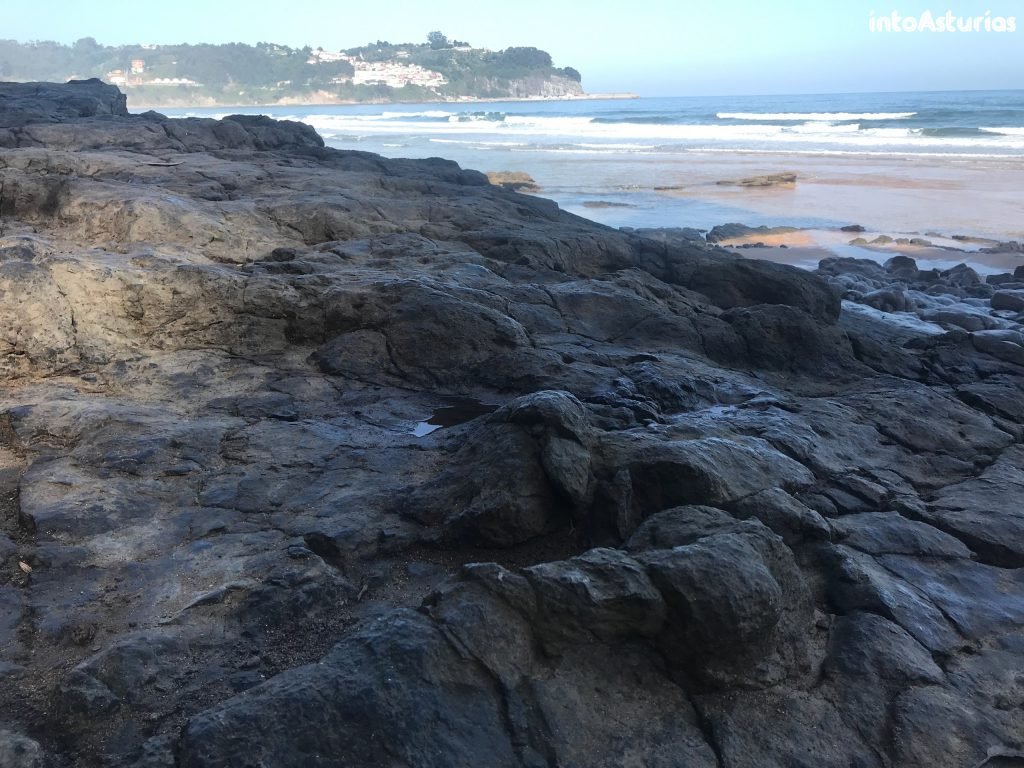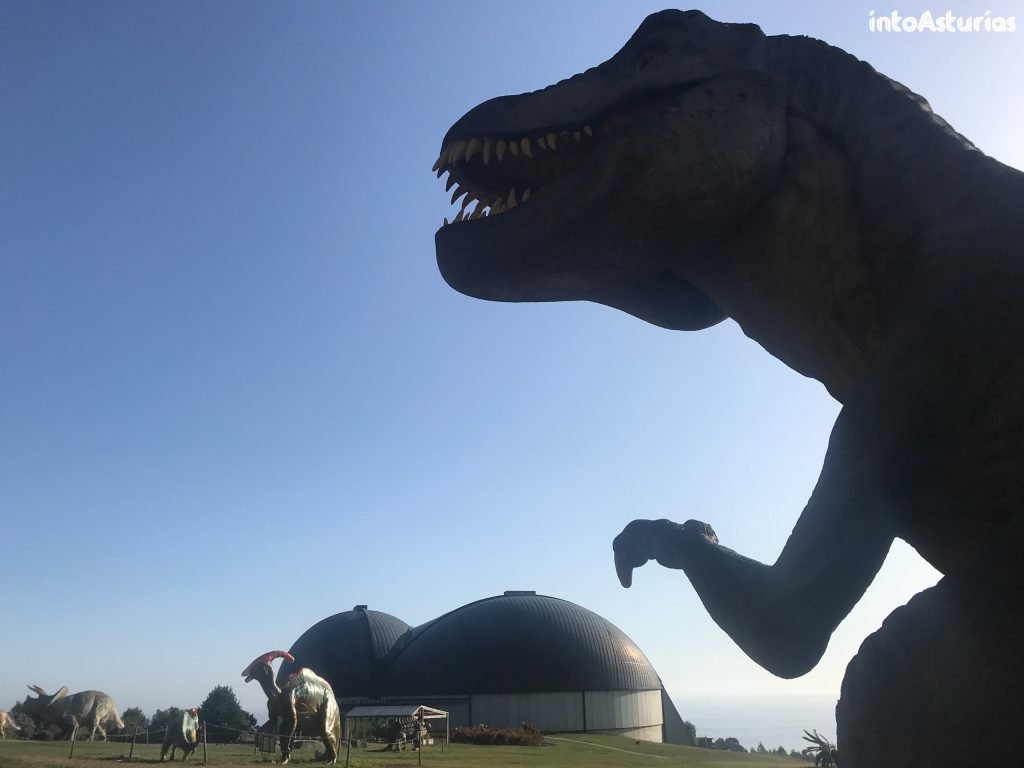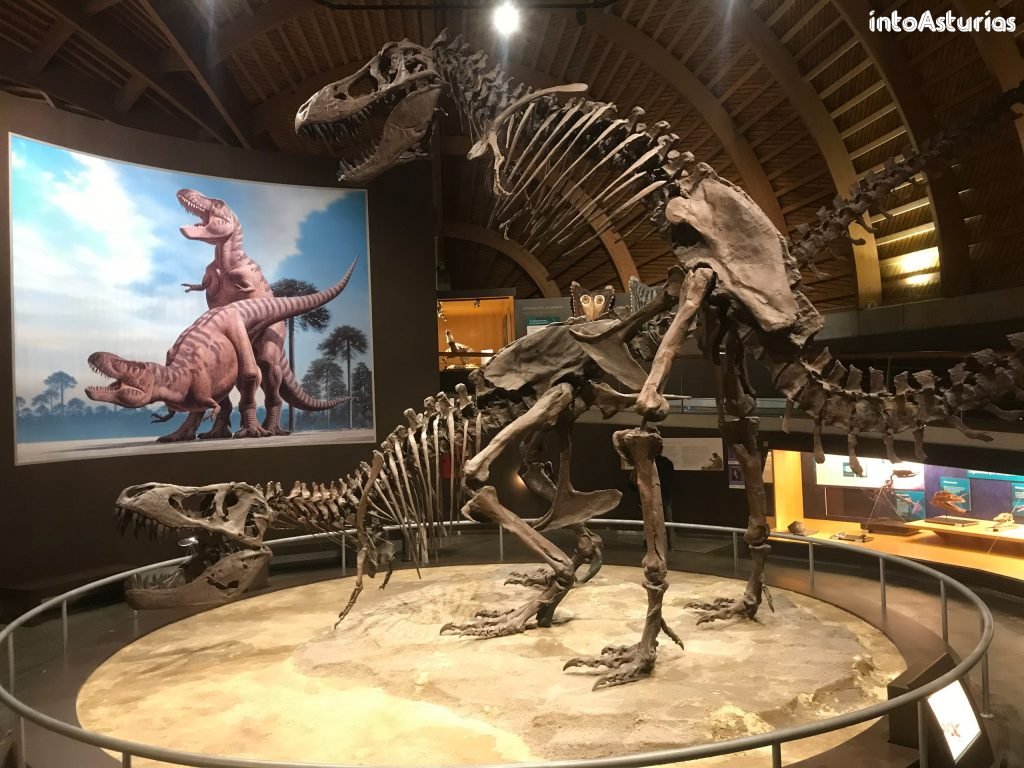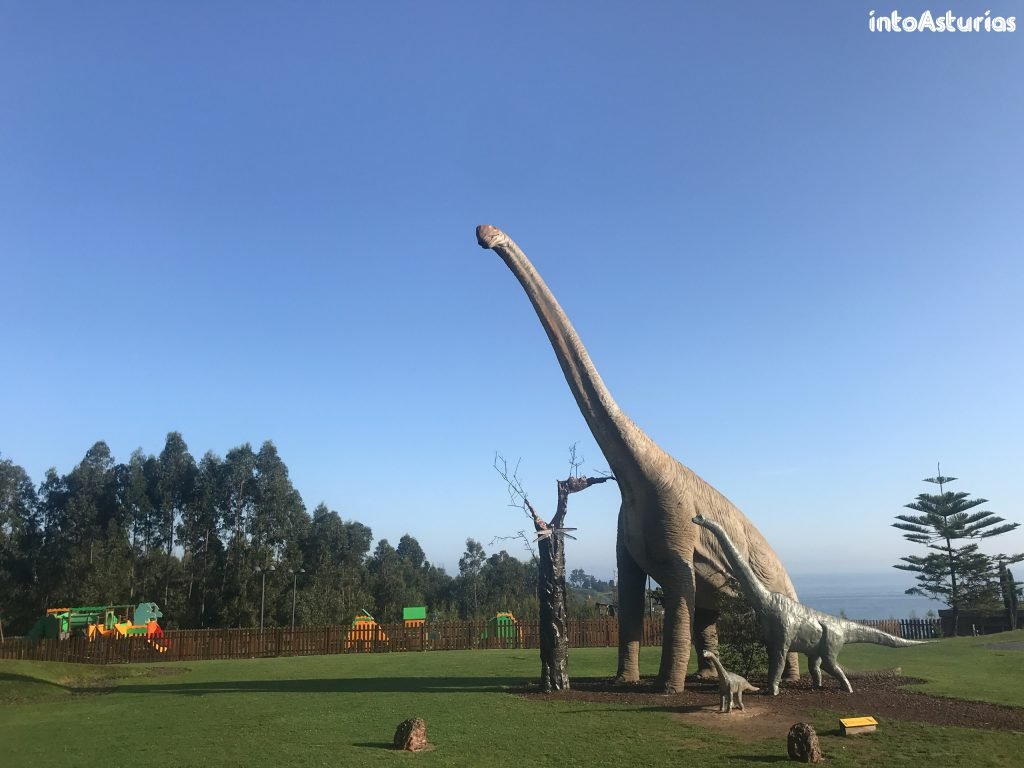Visiting one of Asturias’ many beaches is a great way to spend a sunny winter afternoon. But this time, it gets especially exciting. We are visiting “La Griega beach” and take a stroll through its adjacent eucalyptus forest. A light breeze, sunshine that allows us to walk in our t-shirt even though it’s only February, just a handful of other beach lovers and… gigantic footprints!?!? It turns out that La Griega beach is home to some of the largest dinosaur footprints in the world. Welcome to Asturias’ Jurassic Coast!

Jurassic Museum of Asturias
To learn more about the dinosaur tracks along Asturias’ Jurassic Coast, we visit the MUJA: the Jurassic Museum of Asturias. It’s beautifully located on top of a hill between the villages of Colunga and Llastres. The latter is considered one of Spain’s prettiest villages. Upon entering the hill, the museum’s architecture directly attracts our attention. It is build in the shape of a three-toed dinosaur footprint.
Once inside, we realize that this is actually a great way to let visitors experience the three geological periods that dinosaurs existed. The interior of the museum is designed in such a way, that you are automatically led through the Triassic, Jurassic and Cretaceous. Together, they cover the period from 251 to 65 millions years ago. The route is very intuitive, ensuring that you cannot really miss anything from the exhibition.

Audio-tour
We decide to take a self-guided audio-tour through the museum. It’s cheap (less then 2 euros), available in multiple languages (English, German, French and Spanish) and there is a kids version. We learn about various types of fossils (especially the fossilized poop intrigues the kids), the main characteristics of different dinosaur groups and dinosaur behavior. Did you know, for example, that some Oviraptors actually sat on their nests to let their eggs hatch instead of using the sun? Or have you ever seen two T-Rexes mating? Even though the museum displays a replica, it’s quite impressive!

Asturias’ Jurassic Coast exhibition
But what we found most interesting, is the last part of the exhibition. It focuses on the Jurassic Period in Asturias and is divided into two parts. The first is about the different landscapes throughout time. Based on common rock features, the Asturian Jurassic period can be grouped into five sets of formations, and hence time periods. Each formation has the name of the location nearest to the place where these rocks are best observed: Gijón , Rodiles, La Nora/ Vega, Tereñes and Llastres.
We learn that Asturias’ landscape evolved from a coastal plain to a shallow open sea. Then it turned into a place with meandering rivers. Subsequently, it became an inland sea with high salt content due to evaporation. Good conditions for the conservation of fish and invertebrate fossils! At the end of the Jurassic, Asturias consisted of small deltas, swamps and marshes. All these changes took place over millions of years. It’s exciting and hard to imagine at the same time…

Azabache
One panel is dedicated to the use of Jurassic rocks in traditional Asturian culture. Besides for construction purposes, some rocks were used to design beautiful jewelry. Azabache (or jet) is a type of fossilized wood. Artisans convert the coal after a precise process into shiny black stones. You can find the jewelry for example in Oviedo.
Jurassic fossils of Asturias
The second part shows almost 200 original fossils found along Asturias’ Jurassic Coast. Most spectacular are the footprints of stegosaurs and sauropods with skin impressions made up by scales, footprints of pterosaurs (flying reptiles) and a 1.25m long ulna from an enormous sauropod. This part of the exhibition also points to the 10 routes along the coastline between Gijon and Ribadesella where you can trace such dinosaur tracks yourself!
Fun facts about Asturias’ Jurassic Coast
Intrigued? Here are some fun facts that makes you want to visit the MUJA and Asturias’ Jurassic Coast even more:
- The MUJA dinosaur footprint collection is the most diverse and numerous in Europe and the third worldwide
- MUJA has the most complete skeletons of marine reptiles (ichthyosaurs and plesiosaurs) of the Iberian Peninsula
- It has the most abundant and diverse collection of Jurassic plant fossils found anywhere in Spain
- Along the coast, some of the largest dinosaur footprints ever known of theropods (78 cm) are found.

Did this blog make you eager to visit Asturias’ Jurassic Coast yourself? We organize several guided tours along the coast, or can provide a customized itinerary to trace the dinosaur tracks yourself. Check our website or send us a message at info@intoasturias.com for more information!

